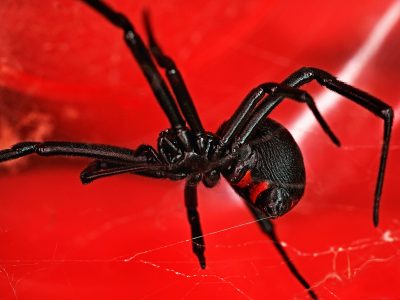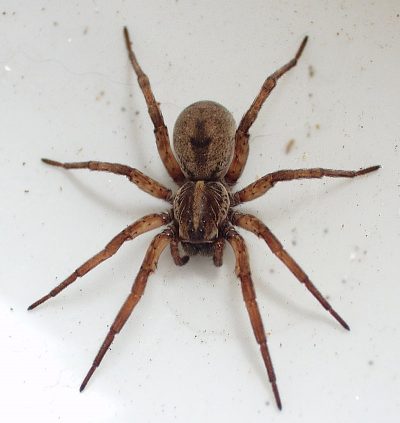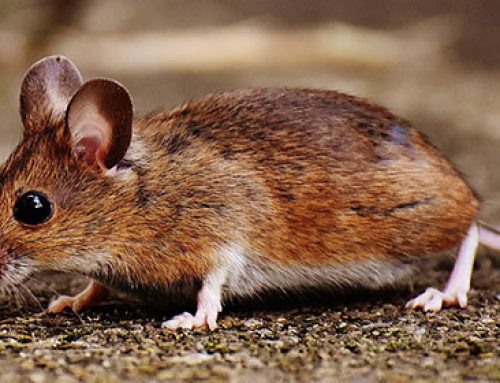What NOT to do:
We consult the internet a lot when comparing spider bites, but one of the things we shouldn’t do is compare insect or arachnid bites with other photos. Each person will react differently to spider bites, so photos are not a reliable source when trying to identify what kind of spider has done the deed. Even doctors do a bit of guesswork when identifying the type of spider bite. The only reliable way would be to capture the spider alive during or after the bite has happened and then identified by an expert.
The following is a summary of the severity and action that should be taken if a spider bite has happened, by order of most evil.
 THE BLACK WIDOW (Latrodectus mactans, variolus and Hesperus, found all over the country)
THE BLACK WIDOW (Latrodectus mactans, variolus and Hesperus, found all over the country)
America’s most notorious and dangerous spider has a bite that could kill. Seriously. The black widow bite is life-threatening and will land victims in the hospital.
PHYSICAL CHARACTERISTICS
Females are jest black, shiny and ¼ inch long with a distinct hourglass shape on the underside of the abdomen. Males are half as large as the females.
BITE SYMPTOMS
Include severe immediate pain and burning, cramping pain and muscle rigidity in many muscle groups, headache, dizziness, rash and itching, restlessness and anxiety, sweating, swelling of the eyelids, nausea &/or vomiting, salivation &/or tearing of the eyes.
WHAT TO DO
The victim will definitely need to see a doctor, may go through the emergency room, and will need medication. Victims are encouraged to wash the site with soap and water, apply ice or use cold/warm compresses, and take acetaminophen for the swelling. There is no need to put a bandage on or apply any pressure. There maybe a need to pray.
 THE BROWN RECLUSE (aka Violin Spider, Loxosceles reclusa, found in central and southern U.S.)
THE BROWN RECLUSE (aka Violin Spider, Loxosceles reclusa, found in central and southern U.S.)
Famously known as the Violin Spider, the Brown Recluse Spider’s bite can be very damaging with a very severe level of pain.
PHYSICAL CHARACTERISTICS
Light brown legs and body and can be ¼ inch to ½ inch long. Has only 6 eyes as opposed to 8. Has a distinct, dark brown violin-shaped marking on the head and thorax.
BITE SYMPTOMS
Reactions may differ but include sever pain at the site of the bite after four hours. Also, sever itching, nausea, vomiting, fever, muscle pain, blistering, death of skin from venom, and severe destructive lesions with deep wide borders. Only 10% of bites result in anything more than a small red mark.
WHAT TO DO
The victim needs to see a doctor and may require medication. Applying ice is recommended, but keep the area dry. Avoid strenuous activity as this can spread the venom in the skin. Use acetaminophen for the pain. A physician would be able to prescribe pain medication, antibiotics if there are signs of an infection, antihistamine for itch relief and removal of any dead tissues. No need for an ER visit, applying pressure or a band aid.
 THE HOBO SPIDER (Eratigena agrestic, aka funnel spider, found in the Northwest WA, UT Parts of OR)
THE HOBO SPIDER (Eratigena agrestic, aka funnel spider, found in the Northwest WA, UT Parts of OR)
This spider’s bite can go undetected, but does come with symptoms
PHYSICAL CHARACTERISTICS
Brown with a distinct pattern of yellow markings on its back, this spider can be ¼ inch to 5/8 inch in length. Hobo spiders do not climb but are very fast runners.
BITE SYMPTOMS
The Hobo Spider’s bite is mild to severe in pain level and can have little to no skin damage. Sometimes, the bite can go completely unnoticed. The bites have been reported to cause sever headaches that can last several days. Ironically, the Hobo Spider falsely accused for necrotic wounds.
WHAT TO DO
Clean the site with soap and water and apply ice. The victim will need to see a doctor. Acetaminophen or an antihistamine should be taken to reduce swelling. The bite site should be monitored in case signs of infection appear.
 SAC SPIDERS (aka Yellow Sac Spider, Cheiracanthium inclusum C. mildei or Trachelas tranquills, found throughout the USA)
SAC SPIDERS (aka Yellow Sac Spider, Cheiracanthium inclusum C. mildei or Trachelas tranquills, found throughout the USA)
The bite pain level and skin damage of this bite is mild to severe.
PHYSICAL CHARACTERISTICS
Often misidentified as brown recluse spiders, Sac Spiders are about ¼ inch to 3/8 inch long. They have no markings that stand out, but their front legs are longer than the rest of their body and other legs. They are very pale and can be yellow, greenish, and tan.
BITE SYMPTOMS
The bite of the Sac Spider creates a stinging sensation similar to a bee sting.
WHAT TO DO
The bite site should be washed with soap and water. The victim will need to see a doctor for acetaminophen or an antihistamine to reduce swelling. It’s recommended to apply ice and watch the bite closely for signs of an infection.
 LARGE SPIDERS (aka Wolf Spiders, Lycosidae, found all over the U.S. and Alaska)
LARGE SPIDERS (aka Wolf Spiders, Lycosidae, found all over the U.S. and Alaska)
Though Wolf Spiders look creepy, they are mostly harmless though their bites will be felt.
PHYSICAL CHARACTERISTICS
Wolf Spiders are robust and agile hunters that usually work alone and do not spin webs. There are over 300 species of Wolf Spiders found in the U.S. Because of their large size their bites will be felt, but are considered mild with mild skin damage.
BITE SYMPTOMS
The bite site will have local pain with mild skin irritation to muscle pain.
WHAT TO DO
The bite site should be washed with soap and water. The victim will need to see a doctor for acetaminophen or an antihistamine to reduce swelling. It’s recommended to apply ice and watch the bite closely for signs of an infection.
 PARSON SPIDERS (aka Eastern Parson Spider, Herpyllus ecclesiasticus, found throughout the U.S. Western and Eastern Parsons spiders are divided by Rocky Mountains)
PARSON SPIDERS (aka Eastern Parson Spider, Herpyllus ecclesiasticus, found throughout the U.S. Western and Eastern Parsons spiders are divided by Rocky Mountains)
PHYSICAL CHARACTERISTICS
These spiders are ½ inch long and have a distinctive white or pink pattern on their middles and are covered in fine hairs. They appear velvety. And are ultra gross because they have pointy legs.
BITE SYMPTOMS
The bite pain level of these spiders is low with no skin damage. These spiders are generally considered to be non-toxic but some people have allergic reactions to this. There is a range of severity but localized allergic swelling, itching and initial pain can occur.
WHAT TO DO
The bite site should be washed with soap and water. The victim will not need to see a doctor But acetaminophen or an antihistamine are recommended if there is any swelling. It’s recommended to apply ice and watch the bite closely for signs of an infection.
So, next time your see one of these horrendous creatures, be careful not to get bitten or call us if you are in the middle of a war zone infestation of giant arachnids. We’ll help you out: 1-800-572-9797.





